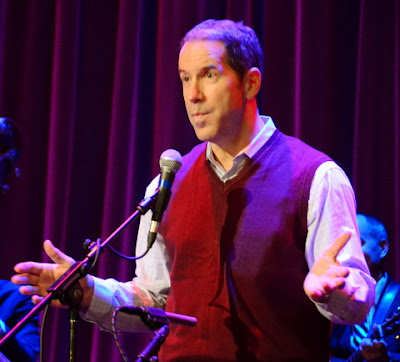In
Writing on the Wall: The First 2,000 Years
(Bloomsbury USA, 2013, 288 pages, $26.00), author Tom Standage
considers the effects of writing on personal and public communication
through the ages, positing that the writing and distribution of news,
analysis, and opinion throughout history has always been a promoter
of freedom, whereas limiting communications has always been the role
of the elites and the rulers. He suggests that each advance in
communications technology, in the freedom of information, has served
to help create a more informed, aware, and, therefore, free people.
He also says that efforts to censor, tax, behead, jail, or otherwise
limit information are always doomed to failure. Along the way, he
considers the major technological changes which altered society's
ability to communicate as well as the officials' strategies used to
limit their effect. At each juncture, he compares older (and
sometimes now obsolete) means of communication as examples of social
media in their time. In doing so, he presents a fascinating and
convincing argument for human freedom at the expense of the status
quo. Writing
on the Wall is an important
and interesting book filled with the personalities and events
promoting improved communication through the ages. In the title, he
considers that the present state of affairs is merely the next step
in the process, which will only be fully revealed by time.
Standage
begins his story in the dawn of civilization, suggesting that writing
emerged on clay tablets and papyrus shortly after humans settled into
a more agrarian lifestyle than nomadic hunter-gatherer. As they
settled down, humans discovered the need to keep accounts and detail
ownership and writing emerged. With the Greeks, knowledge became more frequently written,
while Socrates lamented that the youth were losing their ability to
memorize and listen. The Romans found it necessary to develop writing
still further to help maintain control of their vast empire. Roman
elites began communicating widely through news and personal letters,
often written by scribes and widely disseminated. Early Bible texts
were in the form of letters from the first apostles to local churches
around Asia Minor and throughout the Mediterranean Roman holdings.
With the fall of Rome, literacy, too, took a dive, only kept alive in
the monasteries, where monks copied the holy writings. With
Gutenberg's invention of the printing press around 1439, a revolution
in literacy was set in motion exemplified by the wide distribution of
Martin Luther's 95 theses, which ignited the Protestant Reformation.
Throughout this time both the Church and the nobility sought to
restrain the spread of knowledge by taxing presses and seeking to
maintain illiteracy in common people. In England, Henry VIII
imprisoned and executed many people because of their writings. Such
brutal repression encouraged writers to say in disguised poetry what
they could not say outright. Nevertheless, their was a constant
pressure against the forces of privilege and the elite to spread
knowledge and understanding through the written word. Coffee houses emerged as centers of discussion and social interaction across class lines. Science and
philosophy especially flourished, as people were able to share their
thoughts and ideas more widely. Reading the Bible in vernacular
translations spread both literacy and faith, as well as encouraging
people to interpret scripture themselves.
In
America the Puritans came, of course, to practice their own
religion, not to establish freedom of religion, and thus discouraged
writings that suggested understandings of faith different from their
own. The battles against the imposition of the Stamp Act by
Parliament and the printing of Patrick Henry's pamphlet “Common
Sense,” did much to fan the flame of the Revolution. As printers
became increasingly able to disseminate information in bulk, the
exchange of knowledge became more widespread. Once established, the
Founders were clear that freedom of the press was perhaps their
highest priority, because they enshrined it in the first amendment
to the U.S. Constitution, right beside religion and speech. Perhaps
the greatest mistake in the administration of our second President,
John Adams, was his insistence upon passing the alien and sedition
acts, which sought to control the press. They were quickly withdrawn, but Adams only served one term as President.
Interestingly,
Standage sees the consolidation of media control first in newspaper
empires (Hearst, Pulitzer, Greeley), then in radio broadcasting, and
finally in network television (NBC, CBS, ABC) as anomalies during
which media was further concentrated under the control of a
relatively few individuals and corporations. This trend was
accompanied by what was seen as a relative “dumbing down” of
information based on too little breadth of information sources. The
development of the Internet and particularly of social media have
broadened the sources of information and increased the amount of
diversity of opinion focused on every question. Of course, the new
freedom leads to the possibility of new incursions on privacy and
greater risk for government interference with privacy. Also, it makes
it increasingly difficult for anyone to keep secrets.
Much
of Standage's argument helped clarify issues that had befuddled me in
the past, particularly the Stamp Act and the Alien and Sedition Acts.
But I read a lot of American history with some areas becoming holes despite my familiarity with it. Therefore, the fact that the
material on the French Revolution served to confuse rather than
clarify my knowledge of that area made me wonder whether a reader
less informed about American history would have the same problem of
not finding the clarity they desired. Nevertheless, Standage's
account of social media in a larger context sheds important light on
the communication process and people's desire to be in touch with each
other.
Tom Standage
Tom
Standage is digital editor at The Economist, overseeing the
magazine's website, Economist.com, and its smartphone, tablet and
e-reader editions. Before that he was business affairs editor,
running the back half of the magazine, and he previously served as
business editor, technology editor and science correspondent. Tom is
also the author of five history books, including "An Edible
History of Humanity" (2009), "A History of the World in Six
Glasses" (2005), a New York Times bestseller, and "The
Victorian Internet" (1998), described by the Wall Street Journal
as a "dot-com cult classic". He writes the video-game
column for Intelligent Life, The Economist's lifestyle magazine, is a
regular commentator on BBC radio, and has written for other
publications including the Guardian, the Daily Telegraph, the New
York Times and Wired. He holds a degree in engineering and computer
science from Oxford University, and is the least musical member of a
musical family. He is married and lives in London with his wife and
children.
Writing
on the Wall: The First 2,000 Years by
Tom Standage (Bloomsbury USA, 2013, 288 pages, $26.00) tells the
story of social media through the lens of the spread of communication
throughout human history. It has been described as a pre-history of Internet social media. The book relates a lively and interesting story
through eyes looking both backward and forward, rather than
concentrating on the technology of now. The book is filled with
surprising insights presented with wit and grace. I received the book
as an electronic galley from publisher through Edelweiss
Beyond the Treeline. I read it on a Kindle.




.JPG)























































